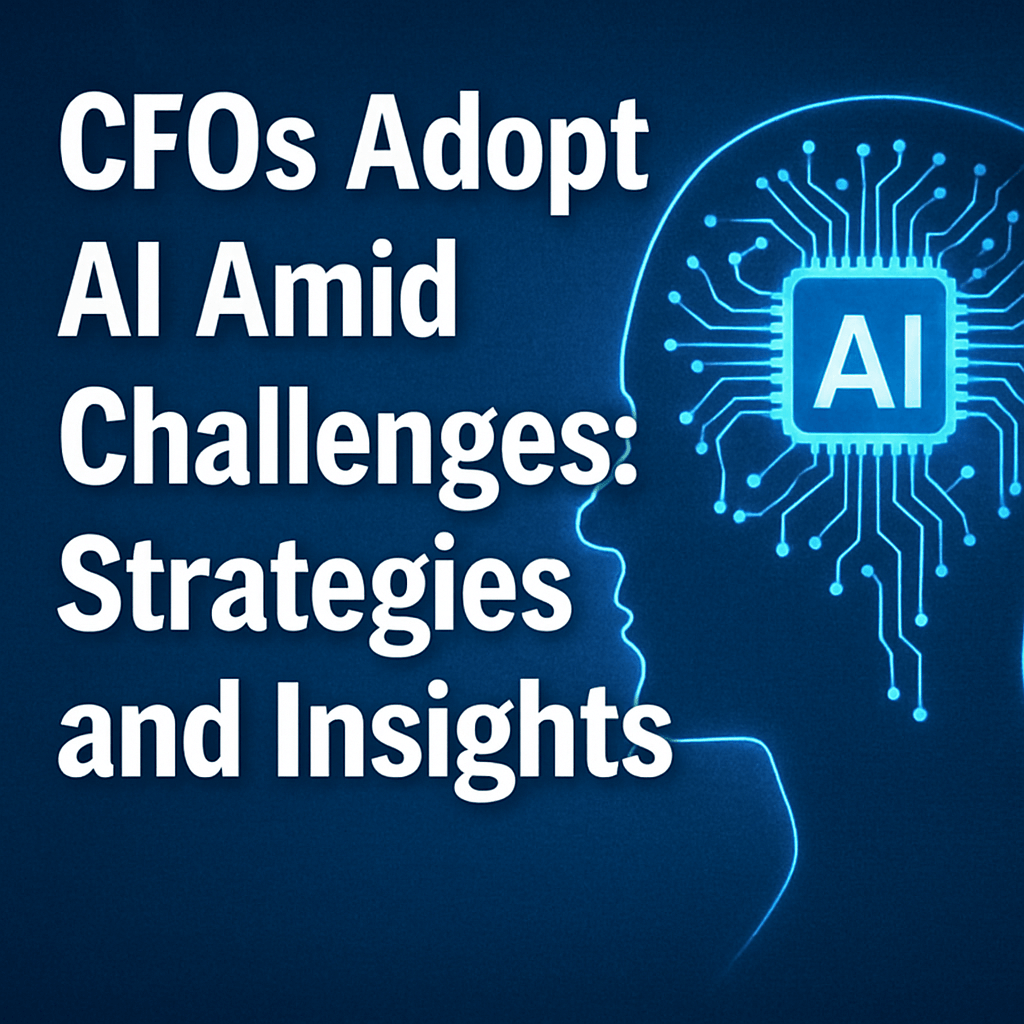CFOs Adopt AI Amid Challenges: Strategies and Insights

CFOs are at a crossroads, balancing the drive for operational efficiency with rising concerns over the risks associated with artificial intelligence (AI) adoption. A recent survey conducted by Kyriba, a finance AI platform, has highlighted this dichotomy by revealing that 96% of CFOs are prioritizing AI integration, despite substantial reservations regarding its application in their organizations.
The Dichotomy of AI Integration
The financial landscape is rapidly evolving, with AI emerging as a crucial tool for data analysis, risk management, and operational efficiency. However, the findings of the Kyriba survey indicate a growing sense of skepticism among CFOs. While 86% report using AI in at least some aspects of their roles, many remain wary of its implications on data privacy, security, and compliance.
AI’s functionality often resembles a “black box,” where the decision-making process is obscure, leading to inconsistencies in the outputs it generates. The opaque nature of AI systems raises critical questions about accountability and reliability, particularly in finance where precision is paramount. Furthermore, as companies collect and harness vast amounts of sensitive data to feed AI systems, issues related to data privacy and protection become pressing concerns. CFOs must navigate these complexities carefully, balancing innovation with the need for stringent data governance.
Strategies to Mitigate Risks in AI Adoption
Bob Stark, global head of enablement at Kyriba, emphasizes that addressing these concerns is essential for fostering trust among CFOs. He offers several strategies that can help ease the integration process:
- Data Ownership and Transparency: CFOs must ensure that the data used by AI systems is owned by their organization. Understanding the mechanics behind AI outputs can help clarify its reliability. Stark suggests that vendors should provide clearer insights into their algorithms, allowing CFOs to independently validate results against internal benchmarks.
- Implement Security Measures: Security remains paramount. Stark advises that enterprise-grade AI solutions come equipped with guardrails to prevent sensitive data from being accessed or utilized beyond intended scopes. Security measures akin to those employed by major cloud service providers like Google, Snowflake, and AWS should be adopted to enhance the safety of sensitive financial data.
- Compliance Strategies: The financial industry is evolving, and compliance with emerging AI regulations must be prioritized. Glenn Hopper, head of AI research and design at Eventus Advisory Group, believes that firms need not only to keep pace with AI developments but also to anticipate regulatory changes, ensuring proactive compliance strategies are in place.
Clarifying Goals Before Deployment
Crucial to successful AI integration is a well-defined understanding of organizational objectives. Stark recommends that CFOs articulate their specific goals for AI applications. Whether it’s improving exposure management, enhancing risk mitigation strategies, or streamlining accounting processes, establishing clear targets is vital.
Once objectives have been set, CFOs should rigorously test the accuracy of AI systems. This could involve benchmarking forecasts generated by AI against traditional methods. Stark suggests that such comparative analyses will not only validate AI’s effectiveness but also foster greater trust among stakeholders in AI-derived outputs.
Creating Comprehensive Policies and Training Frameworks
Establishing a clear usage policy is imperative once the scope of AI deployment is understood. Collaboration with senior management to develop these guidelines ensures that all employees are on the same page. Comprehensive training programs detailing acceptable use scenarios, compliance with organizational policies, and the importance of integrating human oversight into AI processes are essential.
Hopper highlights the necessity for basic training on prompt engineering—teaching employees how to interact effectively with AI systems. Employees should be clarified on what tasks are best suited for AI, how to verify the legitimacy of AI outputs, and strategies for identifying misinformation produced by the AI, often referred to as “hallucinations.” The rollout of such training should promote transparency, showcasing both the capabilities of AI and the organizational standards for its use.
The Future of AI in Finance Departments
Although the integration of AI is still met with hesitance, it is clear that the momentum is shifting towards its adoption. Stark notes that while traditional roles may not be entirely erased, those adept at utilizing AI effectively will likely gain competitive advantages over peers who do not incorporate these tools into their workstreams.
This shift is indicative of broader trends within the financial sector, where rapid technological advancement necessitates agility and innovation. CFOs are urged to embrace AI thoughtfully, leveraging its strengths while implementing robust frameworks to mitigate associated risks.
“In finance, we don’t anticipate roles being replaced, but we do recognize that people with AI may replace people that don’t have AI,” said Stark.
Ultimately, the journey towards AI integration will require strategic foresight, adaptability, and a commitment to fostering a culture of ongoing learning and validation.